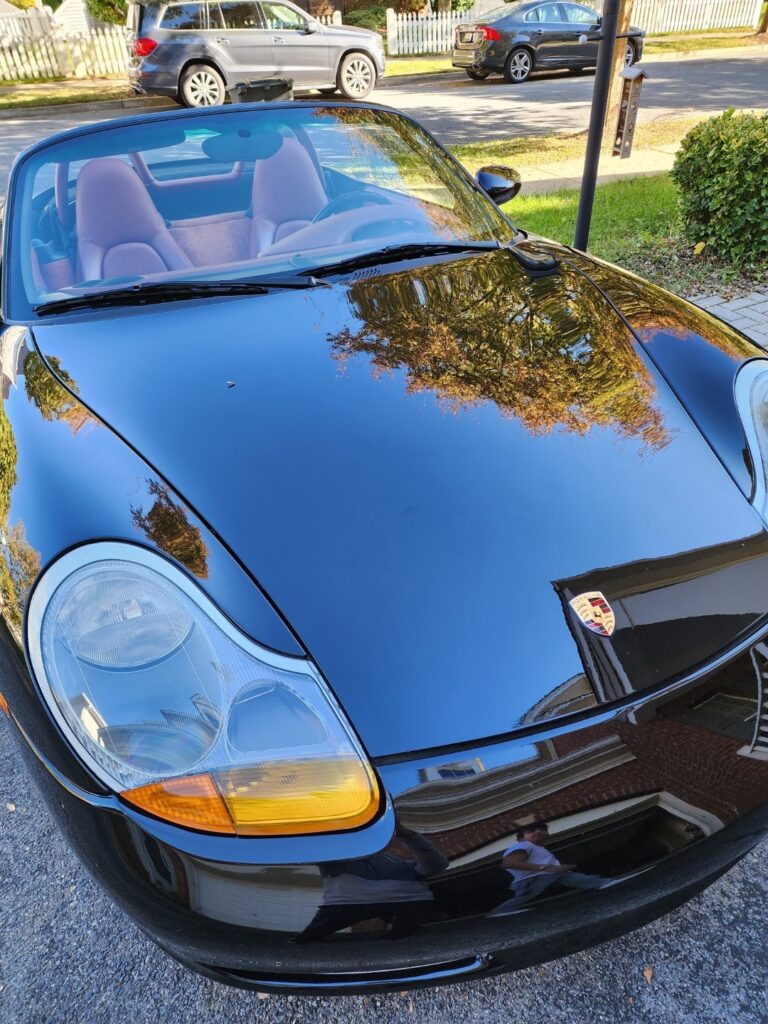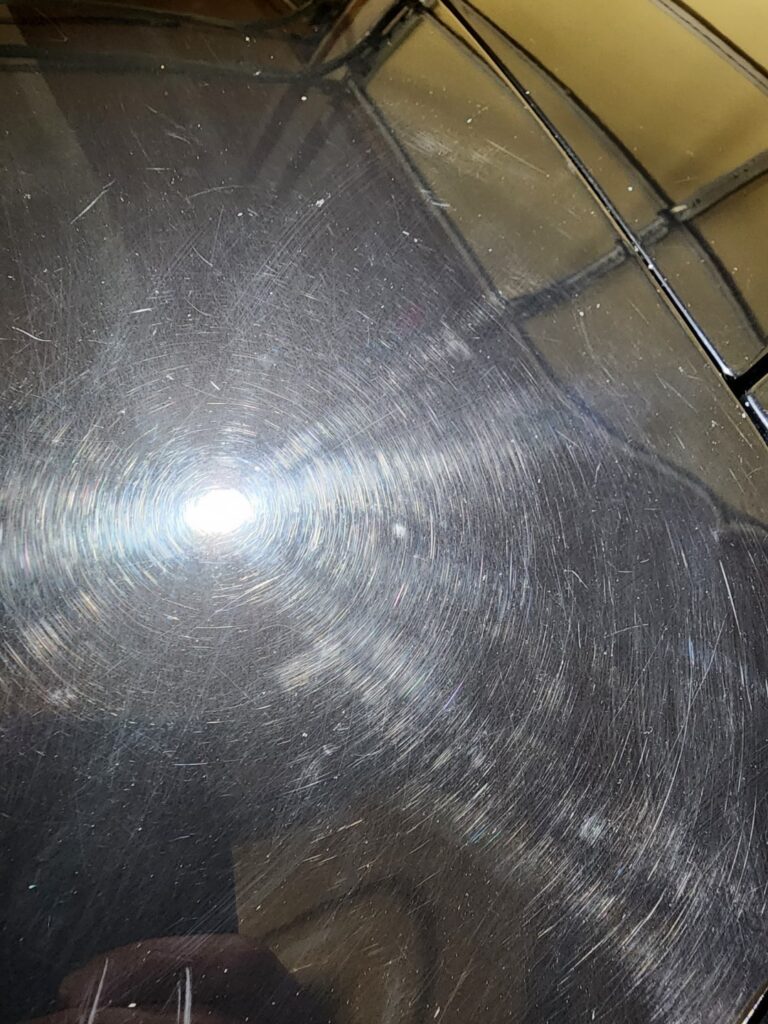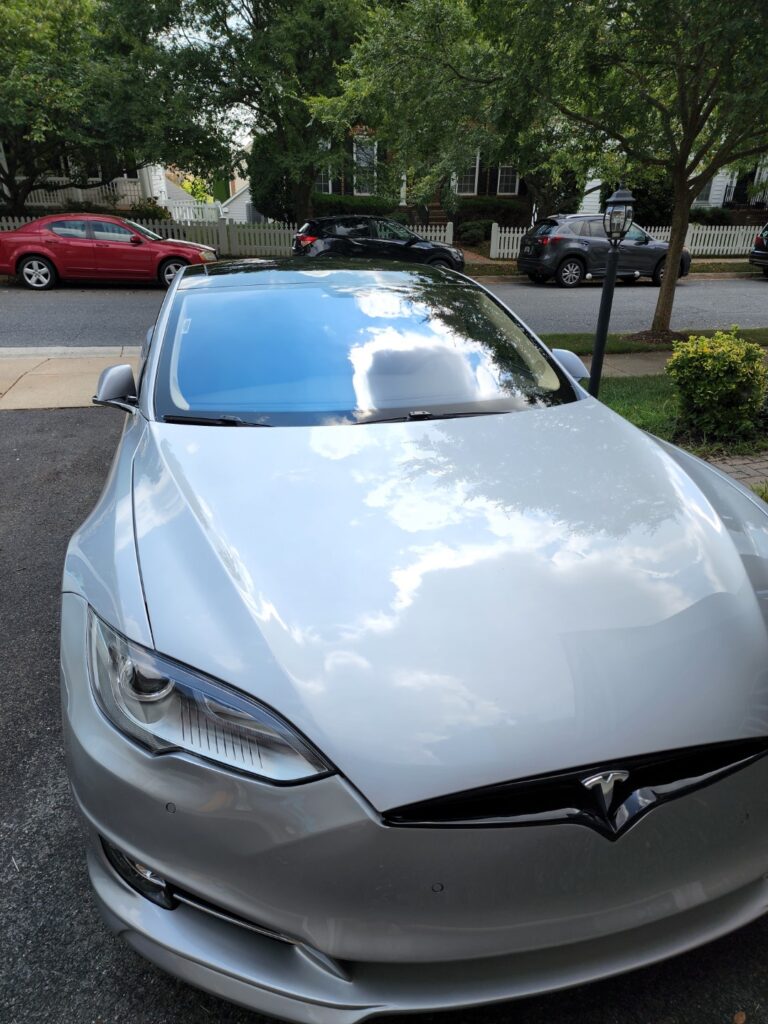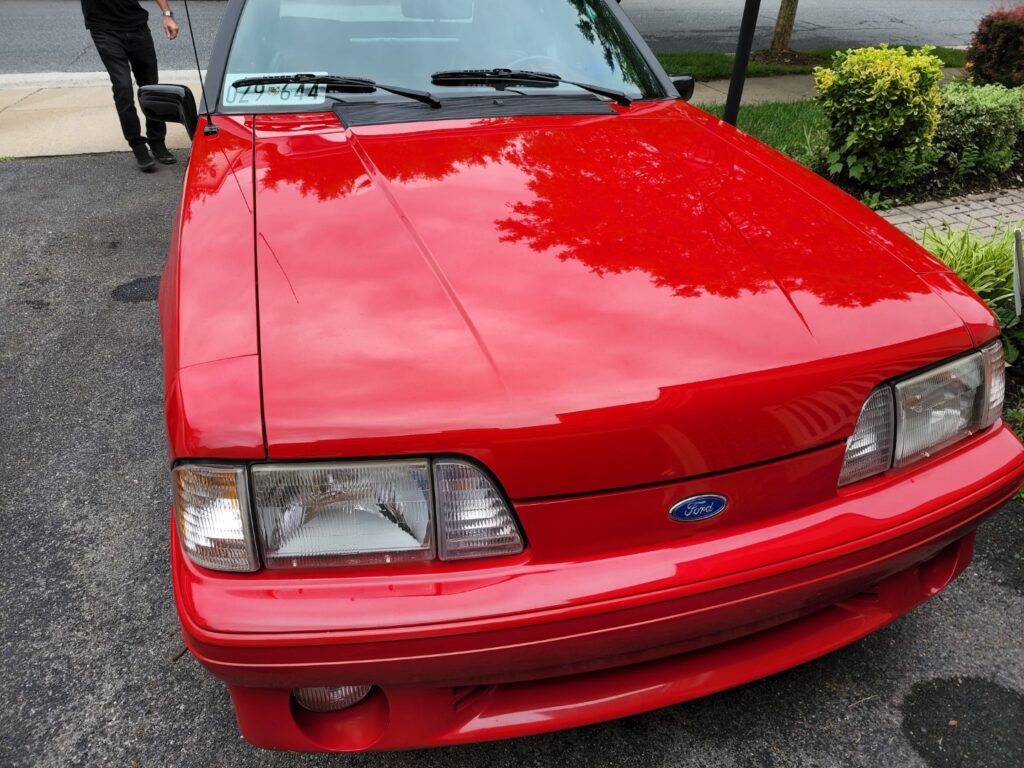



Introduction
Car owners around the globe are constantly looking for ways to keep their vehicles shining and protected from the daily onslaught of dirt, grime, rain, and UV rays. One buzzword that has dominated the automotive detailing scene for the past decade is ceramic coating. By now, you’ve likely heard claims about its supernatural ability to fend off contaminants and drastically reduce your need to visit the car wash. So, let’s get straight to the burning question at hand: Does Ceramic Coating Reduce Car Wash Frequency?
As more people invest in professional ceramic coating jobs—or try DIY kits at home—there’s significant curiosity about whether this high-tech paint protection truly delivers on its promise to keep cars cleaner for longer periods. In other words, car owners want to know if their monthly, bi-weekly, or even weekly car washes can be stretched further once they have a layer of ceramic on their paint.
Throughout this article, we’ll dive into the science behind ceramic coatings and examine real-world experiences that support or refute these claims. We’ll also discuss common misconceptions, practical tips for maximizing the benefits of ceramic coatings, and whether the investment is worth it in the long run. Expect a thorough exploration of ceramic coating composition, car wash frequency factors, and environmental influences that impact just how often you’ll be sudsing up your ride.
By the end, you’ll have the knowledge to decide if a ceramic coating aligns with your vehicle’s needs, your budget, and your overall car care philosophy. Buckle in, because we’re about to unveil 7 shocking truths that might just transform how you look at automotive protection forever.
1. Understanding Ceramic Coatings
When people mention “ceramic,” it often conjures images of pottery or glossy ceramic tiles used in kitchens. But in the automotive world, the term “ceramic” in ceramic coatings typically refers to a silicon dioxide (SiO₂) compound that forms a hard, glass-like layer on top of your car’s paint. Let’s explore the fundamentals to understand what makes this technology so unique in the realm of automotive protection.
1.1 The Basics of Protective Coatings
Protective coatings for vehicles have been around for decades. For a long time, good old-fashioned car wax was the gold standard for adding a layer of sheen and safeguarding paint. Wax provides a hydrophobic (water-repelling) surface that helps water bead off, thus reducing water spots. However, wax is organic and breaks down relatively quickly under heat, UV light, and mechanical abrasion.
Sealants took the next step by introducing synthetic polymers designed to last longer and protect better than wax. Yet even sealants come with their own limitations in terms of durability and longevity. Enter the modern era of ceramic coatings, which provide a more robust shield against contaminants, thanks to a stronger bond with your vehicle’s clear coat. This shift from organic solutions to inorganic, nano-ceramic-based solutions marked a major leap in paint protection.
1.2 How Ceramic Coatings Differ from Wax or Sealants
Longevity: Wax might last only a few weeks, while a good sealant can stay effective for a few months. A high-quality ceramic coating, however, can endure for one to three years—or even longer with proper maintenance. That longevity can translate directly into fewer trips to the car wash, because the surface can fend off dirt and stains more effectively.
Hardness: Ceramic coatings, once cured, create a semi-permanent protective layer with a higher degree of hardness. This means the coating can resist minor scratches, swirl marks, and other superficial damage better than wax or sealants.
Chemical Resistance: Ceramics are known for their inertness, which means they’re not easily broken down by harsh chemicals such as acidic rain or strong detergents. This helps preserve the coating’s integrity under tough conditions, like driving through salted roads or industrial fallout.
Gloss and Clarity: Ceramic coatings are famous for imparting a glossy, candy-like finish to the car’s paint. While wax also offers a warm glow, ceramics tend to deliver a sharper, reflective shine that accentuates the color depth and clarity of the paint.
1.3 Ceramic Coating Composition and Application
Most automotive ceramic coatings are based on silicon dioxide (SiO₂), often combined with other ingredients to enhance flexibility or chemical adhesion. This mixture is applied in liquid form, typically in small sections, then buffed into the paint. Once exposed to air and the paint’s surface, the coating bonds at a microscopic level.
A ceramic layer can be just a few micrometers thick, yet incredibly strong once cured. Application can be done by professionals or enthusiasts, though professional installations generally yield more consistent and longer-lasting results. The process involves:
- Thoroughly washing and decontaminating the paint to remove dirt, tar, and iron particles.
- Polishing or paint correction to eliminate swirl marks and scratches.
- Wiping down the surface with an isopropyl alcohol solution to ensure no oils remain.
- Applying the ceramic coating in small sections, letting it bond for a specified time.
- Leveling or buffing off any excess product to prevent streaks or high spots.
The result is a transparent, hardened shield that wards off contaminants. In addition, it offers hydrophobic properties that allow water, mud, and grime to slide off more readily than they would on bare paint. That’s the foundation for the claim that ceramic coatings reduce the frequency of car washes.
2. The Science of Car Wash Frequency
Before we get too excited about never washing your car again, let’s delve into the science of what dictates car wash frequency. Even the best ceramic coating can’t alter your environment or driving habits. However, it can mitigate the impact of certain factors, which might mean you can space out your washes more comfortably.
2.1 Does Ceramic Coating Reduce Car Wash Frequency? Understanding the Factors
Let’s address the question head-on: Does Ceramic Coating Reduce Car Wash Frequency? The short answer is yes—often, it does. But the degree to which it does can vary significantly. A vehicle that’s garaged daily and driven occasionally on clean roads might only need a wash every few weeks or even once a month. On the other hand, a daily commuter driving through dusty construction zones or areas with heavy pollen might still need a regular cleaning schedule.
The main reason ceramic coatings can help extend the interval between washes is the hydrophobic and anti-stick properties. When water droplets and loose dirt encounter a slippery ceramic surface, they have a harder time clinging. This phenomenon is sometimes referred to as the lotus effect—mimicking how lotus leaves repel water and dirt.
2.2 Environmental and Climatic Influences
Your local climate and environment play a significant role in how often your car needs a wash. Consider these environmental factors:
- Rainfall and Snow: Frequent rain or snow can lead to more contaminants, salt (in snowy regions), and mineral deposits ending up on your car. Ceramic coatings help water slide off, but large amounts of road salt can still accumulate, necessitating regular rinses to prevent corrosion.
- Pollution and Industrial Fallout: Urban areas with higher pollution levels can deposit contaminants that may etch into paint if left unwashed for too long. Ceramic coatings slow this etching process but don’t always eliminate it.
- Pollen and Dust: In areas with heavy pollen or dust, your car can look grimy quickly, especially on darker paint colors. Ceramic coatings make the car easier to rinse off, but you may still want to wash to keep the surface pristine.
2.3 Ceramic Coatings’ Interaction with Dirt and Grime
When dirt lands on a bare clear coat, microscopic pockets and imperfections allow particles to settle and cling. Over time, these contaminants can bond with the paint, making them more difficult to remove. Conversely, a ceramic-coated surface is smoother at the microscopic level, reducing the number of places where dirt can latch on.
Additionally, many ceramic coatings are hydrophobic. As you drive in the rain or rinse your car, water droplets roll away, carrying loose dirt along with them. This self-cleaning effect isn’t perfect, but it does reduce how much dirt remains after a quick rinse. As a result, you might find you can go a little longer between thorough washes. That said, a more rigorous wash is still necessary occasionally to remove stubborn contaminants like tar, bird droppings, or embedded brake dust.
From a scientific standpoint, the nature of the bond between the ceramic coating and your car’s paint is what provides the extra layer of defense. However, real-world driving conditions will ultimately dictate how dramatically that translates into fewer car washes.
3. Real-World Results of Ceramic Coating
Theory and lab tests provide a good foundation, but real-world experiences are where ceramic coatings either shine or fall short. Word-of-mouth, user testimonials, and professional detailing experts often highlight how well a ceramic coating can protect against everyday wear and tear.
3.1 Durable Protection and Shine
One of the most appealing aspects of a ceramic coating is its long-lasting shine. Many people describe the effect as a “candy-gloss” finish that makes the paint pop with vibrant clarity. Because ceramic coatings are inherently tough—they can measure between 7H and 9H on the pencil hardness scale—they stand up to minor scratches and marring better than typical waxes or sealants.
In practical terms, this means:
- Fewer swirl marks from improper washing or dusting.
- A longer-lasting gloss that doesn’t dull as quickly.
- Resistance to chemical etching from bird droppings, tree sap, and acidic rain (although prompt removal is still essential).
3.2 Maintenance Routines Post-Coating
Even though a ceramic coating can reduce how frequently you wash your car, it doesn’t eliminate the need for maintenance. When you do wash, you’ll likely find it:
- Easier and faster to remove surface contaminants.
- Requires less scrubbing, thus minimizing the risk of scratches.
- Maintains a “just-detailed” look longer.
Owners of coated cars often switch to gentler washing methods, like using a foam cannon or a two-bucket wash system. These methods help preserve the coating and the paint underneath. Professional detailers typically recommend using a pH-neutral shampoo, as harsh soaps can diminish the coating’s hydrophobic properties over time—although not to the extent they would degrade wax.
3.3 Comparing Coated vs. Non-Coated Vehicles
A direct comparison between a ceramic-coated car and a non-coated car often highlights the following:
- Dirt Repellency: The coated car stays cleaner for longer, with dust and grime less likely to bond.
- Gloss Retention: The coated car maintains a high gloss, reducing the need for frequent polishing or waxing.
- Reduced Water Spots: While water can still dry on the surface, the minerals in tap water or rain are more likely to roll off rather than remain on the paint and etch in.
If you live in an area with moderate weather and minimal pollution, you might reduce car washes from once a week to once every two weeks—or even longer. In more challenging environments, you’ll still need to wash often, but the cleaning process itself can be simpler and less time-consuming.
Real-world testimonies indicate that while ceramic coatings don’t completely remove the need to wash your vehicle, they do make each wash more efficient. The result is a car that looks fresher for longer periods and may require fewer deep-clean sessions, depending on local conditions and driving habits.
4. Myths and Misconceptions
With all the hype surrounding ceramic coatings, it’s unsurprising that some myths have sprung up. Marketing materials and word-of-mouth exaggerations can sometimes set unrealistic expectations. Let’s dispel a few common misconceptions to keep your understanding grounded in reality.
4.1 “No Car Wash Needed Ever Again!”
The biggest and most misleading myth is that ceramic coatings make washing your car a thing of the past. In reality, contaminants will still land on your vehicle. While the coating helps them slide off more easily, some buildup is inevitable if you leave your car unwashed for too long. For example:
- Road grime mixed with oil and grease can cling to any surface if it sits there long enough.
- Bird droppings, bug splatters, and tree sap can become chemically bonded if they’re not promptly removed.
- Brake dust can embed into surfaces, especially on wheels, requiring more aggressive cleaning methods.
Yes, ceramic coatings can reduce the frequency and intensity of your washes, but claiming that you’ll never need to wash is simply unrealistic.
4.2 Ceramic Coating vs. Paint Protection Film
Sometimes, people confuse ceramic coatings with paint protection film (PPF). While both aim to protect the paint, they differ significantly:
- Material: PPF is a thick polyurethane film that physically absorbs impacts from rocks and debris. Ceramic coatings are liquid polymers that create a thin, hard shell.
- Coverage: PPF covers the entire area it’s applied to in a physical layer, often edges, corners, and other high-impact zones. Ceramic coatings form a microscopic layer; they aren’t designed to absorb major impacts.
- Aesthetic: PPF can be noticeable at the edges, while a ceramic coating is virtually invisible.
- Cost: PPF is generally more expensive due to material and labor costs. Ceramic coatings can range from budget DIY kits to premium professional packages, but they’re usually less expensive than a full PPF job.
4.3 Longevity Claims vs. Reality
Another common misconception is that ceramic coatings last “forever.” Some marketing might say “lifetime protection,” but in practical terms, most ceramic coatings last between one and three years—some premium options can extend to five or more years with meticulous care. However, even the best coatings wear down over time due to:
- Abrasion from road debris, washing, and physical contact
- Exposure to UV rays and extreme temperature changes
- Harsh chemicals, such as acid rain or corrosive cleaning products
Reapplication or a top-up maintenance coat may be necessary every year or two to maintain optimal performance. A quality ceramic coating is an investment, and just like any investment, it requires upkeep to yield the desired results.
5. Maximizing Your Ceramic Coating Investment
Now that we’ve explored the benefits and debunked some myths, let’s focus on best practices to maximize the ceramic coating investment. Getting the most out of any product hinges on proper application and ongoing maintenance.
5.1 Proper Application Techniques
A ceramic coating is only as good as its application. Here are key points to remember:
- Surface Preparation: Thoroughly wash, decontaminate, and polish the paint to remove existing swirl marks or oxidation. Applying a ceramic coating over defects will seal them in, making them harder to fix later.
- Environment: Apply in a clean, dust-free setting—ideally indoors. Dust and debris can get trapped under the coating, affecting its bond and finish.
- Follow Instructions: Different brands have different application windows, flash times, and recommended thicknesses. Stick to the manufacturer’s guidelines or hire a reputable professional.
- Practice Makes Perfect: If you’re going the DIY route, start with test panels or watch multiple tutorials. Mistakes like streaks or high spots can require time-consuming correction.
Professional detailers typically have a controlled environment, specialized lights, and advanced tools for measuring paint thickness. This often results in a smoother, more consistent finish that can last longer than a rushed DIY job.
5.2 Ongoing Maintenance and Care
After you’ve spent money (and possibly hours of labor) on a ceramic coating, you’ll want to protect that investment with these maintenance tips:
- Gentle Washing Methods: Use the two-bucket method (one for soapy water, one for rinsing your mitt), or a foam cannon to pre-soak and lift dirt away. This reduces friction that could wear down the coating.
- pH-Neutral Shampoos: Harsh or overly acidic/alkaline shampoos might degrade hydrophobic properties sooner. Opt for mild cleaners specifically formulated for coated cars.
- Regular Inspection: Quickly remove stubborn contaminants like bird droppings or tree sap. The sooner you address these, the less chance they have to etch into the coating.
- Use of Ceramic “Boosters”: Some brands offer sprayable ceramic boosters or topcoats that refresh the hydrophobic properties. Applying these periodically can extend the life of your base coating.
5.3 Cost Analysis: Is It Worth It?
The initial outlay for a quality ceramic coating—especially if done professionally—can be significant. Prices can range from a few hundred dollars for a basic package to well over a thousand for premium coatings with multiple layers. However, the longer service life and reduced maintenance costs can offset this upfront investment.
- Fewer wax or sealant reapplications: Traditional wax might be reapplied every few months. Over a few years, the total cost (and time) of repeated wax or sealant applications can add up.
- Potential improvement in resale value: A well-maintained exterior often commands a higher price in the used car market, as it signals that the owner took good care of the vehicle.
- Time savings: If you value your free time, fewer deep-clean sessions might justify the cost alone.
On balance, many car enthusiasts find ceramic coatings a worthwhile investment—especially if they keep their vehicle for multiple years or want to maintain a showroom shine with minimal effort. While it does not eliminate washing altogether, the ease of maintenance and sustained gloss often make it a compelling choice.
6. Frequently Asked Questions (FAQ)
Below are some of the most common questions car owners ask regarding ceramic coatings and how they affect wash frequency:
- Q: Does ceramic coating reduce car wash frequency for heavily used vehicles?
- A: It can, though heavily used or commercial vehicles exposed to extreme conditions may still require regular washes. The coating will make each wash quicker and more effective.
- Q: How do I maintain the hydrophobic properties of the coating?
- A: Use pH-neutral shampoos, avoid abrasive cleaning tools, and periodically apply ceramic boosters if recommended by the coating manufacturer.
- Q: Can I apply ceramic coating on top of existing wax or sealant?
- A: No. You should remove all previous wax or sealant layers and properly prep the paint. Ceramic coatings need a clean, bare surface to bond correctly.
- Q: What if I don’t prep the paint thoroughly before coating?
- A: Failing to decontaminate or correct the paint properly can seal in imperfections, leading to a subpar finish that may also reduce the coating’s lifespan.
- Q: Does ceramic coating protect against rock chips?
- A: It offers minor resistance to small scratches and swirl marks but does not provide the same impact protection as paint protection film.
- Q: Can I apply ceramic coating myself, or should I hire a professional?
- A: DIY kits are available, but the learning curve can be steep. A professional will usually ensure a more consistent, durable result, though at a higher cost.
For additional guidance and product comparisons, you can visit reputable detailing forums or check out resources like the Autogeek Online Forum for detailed discussions on ceramic coating best practices.
7. Conclusion
Ceramic coatings have undoubtedly changed the game for automotive paint protection. They boast impressive durability, long-lasting gloss, and strong hydrophobic properties, all of which can help reduce your car wash frequency—at least to some extent. The key points to remember are:
- Ceramic coating technology does not magically eliminate the need to wash your car, but it can make each cleaning simpler and less frequent.
- Proper preparation and application are crucial to ensure the coating bonds correctly and lasts its intended lifespan.
- Maintenance routines remain essential; however, they become easier and more effective with a quality ceramic coating in place.
- Understanding environmental factors and your driving habits is critical for setting realistic expectations on how many washes you can skip.
- Myths and hype often paint an extreme picture of never having to wash your car again, which isn’t true. Think of ceramic coatings as a helpful ally, not an absolute solution.
If preserving your car’s finish with minimal fuss sounds appealing, a ceramic coating is likely worth the time and cost. The result: a vehicle that stays cleaner for longer, retains its showroom-like shine, and may even maintain a higher resale value down the road. Now that you have 7 shocking truths about ceramic coatings, you can make an informed decision and start enjoying a cleaner, more vibrant car—fewer washes required.
